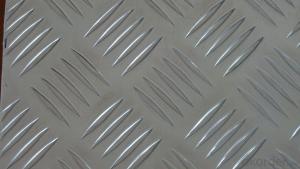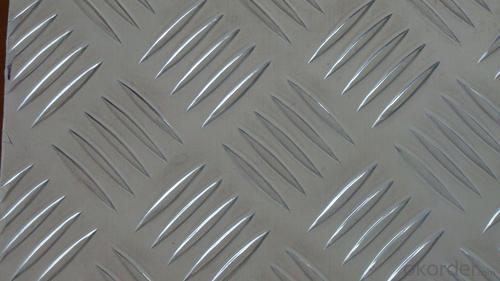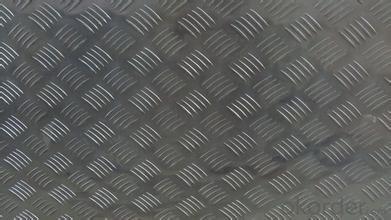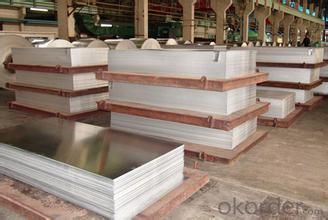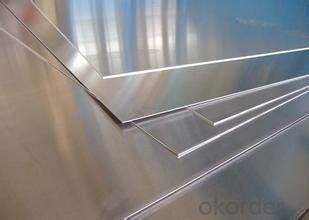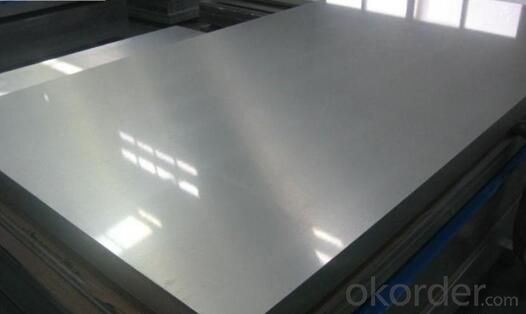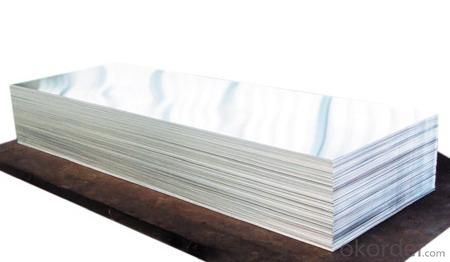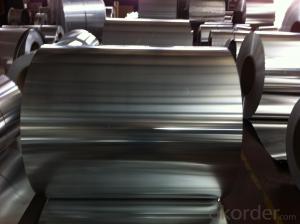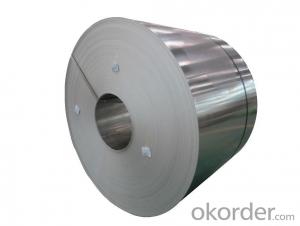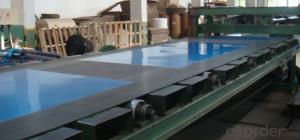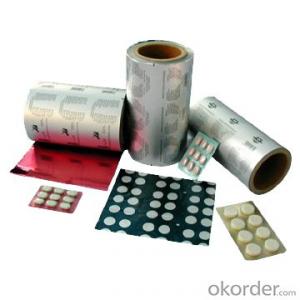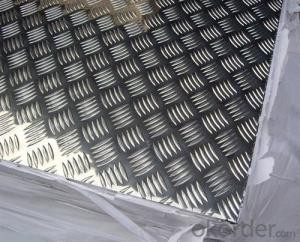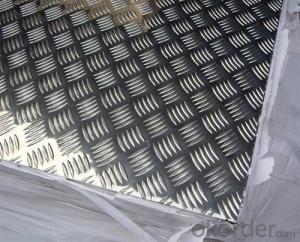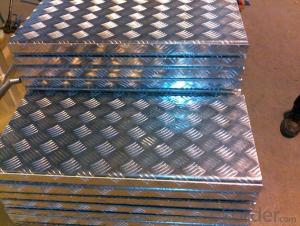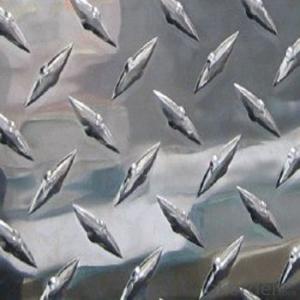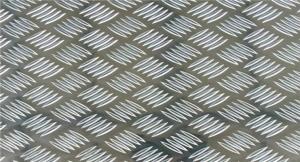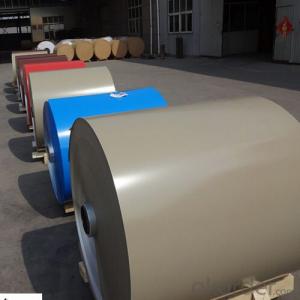Self Adhesive Aluminum Sheets 12x12 Mirror Five Bars Embossed Aluminum Sheet Coil for Tread Plate
- Loading Port:
- Shanghai
- Payment Terms:
- TT OR LC
- Min Order Qty:
- 8 m.t.
- Supply Capability:
- 20000 m.t./month
OKorder Service Pledge
OKorder Financial Service
You Might Also Like
Specification
1.General Information
Aluminum sheets is between 0.1 mm and 500mm in thickness and has a wide variety of uses in the construction industry including aluminium siding and roofing. Sheet is also used widely in construction, decoration, transport applications and other various industrial filed, such as automobile body panels, airframes, curtain walls and the hulls of boats etc.
We produces aluminum sheets which meets the highest standards in its own mill while save the cost. Our strong quality control term bring you the most-qualified products. Our aluminum complying with YS/T 429-2000(Chinese Industry Standard),GB/T 3880,EN485,ASTM B209.
The main producing procedure includes the following steps:
Rolling--Annealing--Slitting--Sawing, Cut-To-Length, Shearing
2.Structure of Embossed Aluminum Sheets for Different Usages
Our Embossed Aluminum Sheets for Different Usages have different patterns including diamond, stucco, big five bars, small five bars, etc.
Embossed Aluminum Sheets for Different Usages are widely used in decorative purchase in construction, packing and appliance. They are also very popularly used in anti-slippery purchase in vehicles and public places.
3.Main Features of Embossed Aluminum Sheets for Different Usages
High intensity
Easy to be processed and shaped
Weather resistance
Anti-pollution & environment protection
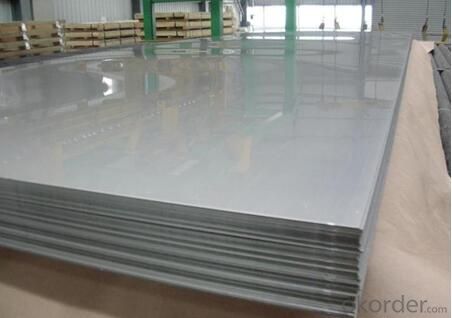
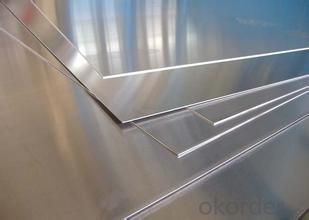
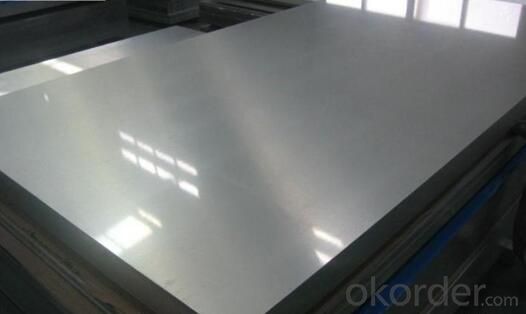
- Q: Is it possible to recycle aluminum sheets multiple times?
- <p>Yes, aluminum sheets can be recycled again and again. The recycling process for aluminum is highly efficient, and it can be recycled indefinitely without losing any quality. This is due to the fact that aluminum retains its properties even after multiple recycling cycles. Each time aluminum is recycled, it can be melted down and reformed into new products, making it a sustainable and environmentally friendly material.</p>
- Q: Can someone please explained what aluminum reacts slowly with dilute acided?Thank you!
- rethink your question, is non sensical at this point.
- Q: What are the typical thickness options for aluminum sheets?
- The typical thickness options for aluminum sheets vary depending on the specific application and industry requirements. However, aluminum sheets are commonly available in a range of thicknesses. Some of the most common thickness options for aluminum sheets include 0.025 inches (0.635 mm), 0.032 inches (0.81 mm), 0.040 inches (1.02 mm), 0.050 inches (1.27 mm), 0.063 inches (1.6 mm), 0.080 inches (2.03 mm), and 0.125 inches (3.18 mm). These thicknesses are often used in various industries such as aerospace, automotive, construction, and manufacturing. It's worth noting that specialty aluminum sheets can be found in even thicker options, depending on the specific requirements of a particular project.
- Q: My understanding of the periodic table, the transitional metals all rust because the S shells are higher energy then the D shells. So all transitional metals have 2 valence electrons. (Roughly...some electrons like to move around and give different apparent charges.) So why does aluminum corrode if it doesn't have a 2+ charge?
- 'Rusting' commonly refers to the corrosion (oxidation) of iron so when talking about other metals, it is better to use the term 'corrosion' or 'oxidation'. Aluminum can corrode and the fact that it has a general oxidation number of +3 doesn't really matter. Many elements which have a charge that is different from +2 can oxidize. Alkali metals for instance (which have a charge of +1) can oxidize. Lithium can form lithium oxide (Li2O), sodium can form sodium oxide (Na2O) and so on. However, aluminum is known to be quite resistant to corrosion (oxidation) because it spontaneously forms a thin (solid) oxide layer at it's surface protecting it from further oxidation whereas iron, for an example, will easily lose that thin layer (it ''peels off easily'') exposing more iron to corrosion. So since Al has a +3 charge and O has a -2 charge, you'll need 2 atoms of Al and 3 atoms of O to make an electrically neutral compound. 2 atoms of Al = +6 charge 3 atoms of O = -6 charge Hence Al2O3 which is aluminum oxide. I hope it helps.
- Q: Are aluminum sheets suitable for chemical processing applications?
- Aluminum sheets are a great choice for chemical processing applications. They are widely used in various industries, including chemical processing, due to their versatility. One of the reasons aluminum is preferred is because it has excellent corrosion resistance properties. This makes it ideal for applications that involve exposure to chemicals and corrosive environments. Aluminum sheets can resist many acids and alkalis, including common chemicals like sulfuric acid, hydrochloric acid, and sodium hydroxide. The reason aluminum is so resistant to corrosion is because of the thin oxide layer that forms on its surface. This layer acts as a barrier against chemical attacks and can quickly reform if damaged, providing continuous protection to the metal underneath. Additionally, aluminum is lightweight, has high thermal conductivity, and can be easily shaped and sized, making it a popular choice for chemical processing equipment and components. In chemical processing applications, aluminum sheets are often used for storage tanks, heat exchangers, piping systems, and other equipment that comes into contact with chemicals. They can withstand high temperatures and pressures, making them suitable for various processing conditions. Furthermore, aluminum is non-toxic, non-magnetic, and has excellent electrical conductivity, which can be advantageous in certain chemical processes. However, it's important to consider the specific chemical environment and conditions when choosing aluminum sheets for chemical processing applications. Some aggressive chemicals, like strong bases or highly oxidizing acids, may require additional protection or alternative materials. It's recommended to consult with experts or engineers who are familiar with the specific chemical processes and conditions to ensure that aluminum sheets are suitable for a particular application.
- Q: This question asks about the key factors to consider when buying aluminum sheets, including material properties, thickness, surface finish, and other relevant details.
- <p>When purchasing aluminum sheets, consider the following specifications: 1) Alloy type, which determines properties like strength and corrosion resistance; 2) Thickness, measured in millimeters, affecting the sheet's durability and application; 3) Width and length, which should match your project requirements; 4) Surface finish, such as mill finish, anodized, or painted, which impacts aesthetics and protection; 5) Temper, indicating the hardness and formability of the sheet; 6) Certifications, ensuring the sheet meets industry standards; 7) Supplier reputation and customer reviews for quality assurance. These factors will help you select the right aluminum sheet for your specific needs.</p>
- Q: Could two pieces of aluminum sheets be welded together?
- sure, it does.
- Q: Can the aluminum sheets be used for manufacturing heat shields?
- Yes, aluminum sheets can be used for manufacturing heat shields.
- Q: This question asks for signs or indicators that would suggest whether a roof needs to be replaced or repaired using aluminum sheets.
- <p>To determine if your roof needs replacement or repair with aluminum sheets, look for the following signs: visible rust or corrosion, especially on the seams and fasteners; sagging or buckling in the roof surface; leaks or water damage inside your home; and excessive noise during rain or wind. If the damage is widespread or the roof is old, replacement might be necessary. However, if the damage is limited to specific areas, repairs could suffice. It's always best to consult with a professional roofer for an accurate assessment.</p>
- Q: Can aluminum sheets be welded or joined together?
- Indeed, welding or joining together aluminum sheets is possible. Aluminum possesses excellent weldability, allowing for its fusion through diverse welding techniques such as gas tungsten arc welding (GTAW), gas metal arc welding (GMAW), and laser welding. These methods involve the application of heat to liquefy the aluminum sheets and establish a robust connection. Furthermore, mechanical fasteners like screws, rivets, or adhesive bonding can also be employed to join aluminum sheets. The selection of the welding or joining approach hinges upon the particular application and the desired result.
Send your message to us
Self Adhesive Aluminum Sheets 12x12 Mirror Five Bars Embossed Aluminum Sheet Coil for Tread Plate
- Loading Port:
- Shanghai
- Payment Terms:
- TT OR LC
- Min Order Qty:
- 8 m.t.
- Supply Capability:
- 20000 m.t./month
OKorder Service Pledge
OKorder Financial Service
Similar products
Hot products
Hot Searches
Related keywords
